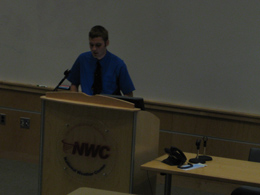May 27 - August 1

Determining Useful Forecasting Parameters for Lake-Effect Snow Events on the West Side of Lake Michigan
Bradley Hegyi and Kevin Kloesel
Abstract:
Many of the techniques that have been developed for lake-effect snow forecasting have been designed for regions where lake-effect snow is common, such as western Michigan and upstate New York. In this paper forecasting parameters developed by the NWS forecast offices in Buffalo and Detroit are applied to lake-effect snow cases on the west side of Lake Michigan to see if the parameters accurately depict conditions that are favorable for lake-effect snow development. North American Mesoscale (NAM) and Rapid Update Cycle (RUC) model data at two points near Chicago and Milwaukee are used in the evaluation. Northeast and north- northeast 850 mb and 925 mb winds are found to be common to lake-effect snow events in this region. In addition, the minimum -13°C temperature difference between 850 mb and the lake surface is present during most of the lake-effect snow cases. Low directional wind shear between the surface and 850 mb is also present, but is not an absolute requirement for lake- effect snow to occur in this region.